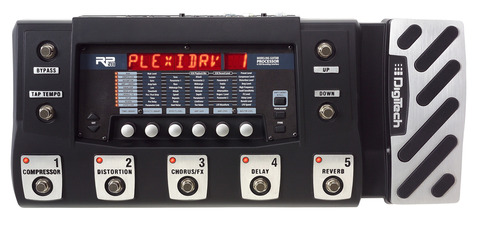
Here's How to Fatten a Fender Deluxe for Harp
Members of the Harp-L List regularly ask how they can achieve a “Chicago” style sound when using the PA system as the main amplifier for harmonica. This page offers a few solutions that have been tested and proved to work.
Most Chicago blues-style players go for a Chicago sound using an Astatic JT-30 or a Shure Green Bullet mic and a small tube amp. (We use the term “small” advisedly; the Fender Twin Reverb is preferred by some players, and that’s a pretty powerful amp. See our Pro Page at this site for information on specific setups used by top pros.) The amp’s speaker(s) can then be miked through a PA, just like any other instrument onstage.
Alternative setups include the following, in order of preference:
1) Mic (Astatic, Green Bullet, or dynamic vocal) to small amp (such as a Peavey Rage, Fender Champ, or Crate VC508, with a line-out feature) to PA (via the amp line-out)
This setup works very well, is cost-effective, and allows you to practice using essentially the same setup that will be used on-stage. The amp may or may not be used as an onstage monitor, as you choose. Amps like the Rage (used) generally don’t cost much (if any) more than a distortion pedal, and give you better control over gain, tone, and clean volume. A DI box is not needed in this case because the line-out on an amp puts a better signal to the PA than a distortion pedal does.
Many players have tried a setup that basically includes running a mic to a distortion pedal, then running a line from the distortion pedal directly to the PA. Such setups don’t work, period. The next two setups are similar, and will do the job.
2) Mic to distortion pedal to Sansamp to board
A Sansamp (or DI box, as per the following discussion) is very important in this setup; it’s what buffers the signal from the distortion pedal, and without it the signal will not be at the right level for the PA. The Sansamp works very well with a pedal, and it offers more tonal options than a simple DI box. A balanced direct line from the Sansamp to the board is important if the line run is over 20 feet, not so important if the run is less. If you go with this setup or the following one, do NOT use a blues mic like the Astatic or Green Bullet; use a dynamic vocal mic like the Shure SM-58 or equivalent.
3) Mic to distortion pedal to DI box to board
There are many distortion pedals that work well in this and the preceding setup. Two I have used personally for both performance and recording are the DoD Classic Tube (FX 53) and American Metal (FX 56). The former of these comes closer to a Chicago sound, the latter to metal-ish rock and roll. (Johnny Mars, one of the best-known players in the UK, is said to favor the American Metal pedal too.) The TubeWorks Blue Tube is highly recommended by some Harp-L list members; make sure to get the Blue Tube, NOT the Real Tube.
4) Mic (dynamic vocal, such a Shure SM58) straight to board.
If a board channel with empty channels adjacent is available, you can purposely “clip” the channel you’re using by adding too much gain. With proper settings, this setup will provide an acceptable distorted harp sound. However, note that this setup requires plenty of experimentation to get the right levels, and is not easily transferrable to different PAs. In other words, it’s usually not the preferred solution when you’ve just walked into a club and asked to sit in with the band.
Tags In
Related Posts
Leave a Reply
You must be logged in to post a comment.
WHAT’S NEW
Categories
- Audio/Video
- Blog
- Blue Future
- Digitech RP Tricks and Tips
- Discography, CDs, Projects, Info, Notes
- Featured Video
- For the Beginner
- Gallery
- Hunter's Effects
- Hunter's Music
- Huntersounds for Fender Mustang
- Meet the Pros
- More Video
- MPH: Maw/Preston/Hunter
- My Three Big Contributions
- Player's Resources
- Pro Tips & Techniques
- Recommended Artists & Recordings
- Recommended Gear
- Recorded Performances
- Reviews, Interviews, Testimonials
- The Lucky One
- Uncategorized
- Upcoming Performances
- Zoom G3 Tips and Tricks
